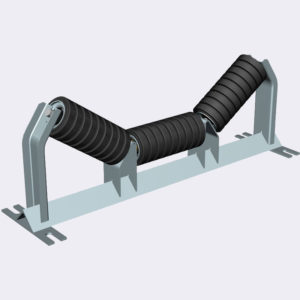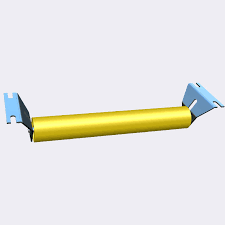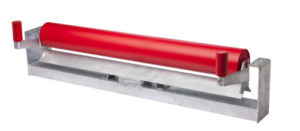Conveyor idlers manufacturer
Idlers are vital to the conveying process. They support the belt and conveyed material along its full length preventing it from stretching, sagging, and eventually failing.
Conveyor idlers are often required to operate in harsh environments such as dirty, dusty, high humidity, and drastically high or low temperatures.
CARRY IDLERS
Troughing idlers
Troughs are the most widely recognized idlers utilized on the conveying side of the conveyor. Broadening their future can be a test. Our demonstrated seal structure and low support rollers lead to less vacation and expanded benefits. Neo’s troughing idlers come in 20°, 35°, and 45° and meet all CEMA dimensional prerequisites.
Impact idlers
Impact idlers are intended for stacking regions of the belt, where belt harm is regular because of the falling material and reliable impacts. Impact rollers ingest impact powers forestalling harm to the transport line, idler edge and encompassing structure from happening.
The key advantage of utilizing impact idlers is the counteraction of harm to the belt as belts are expensive to fix and supplant. Along these lines, they help improve profitability and abatement support costs.
Self-training idlers
Our Self-Aligning Idlers guarantee that your transport lines remain on target, limiting the opportunity of extreme belt defilement.
The idler’s side guide rollers control the belt from running up and over the transport. So as to decrease the wear on the belt, the side guide rollers are made with high-grade urethane that diminishes the erosion between the idler and belt
RETURN IDLERS
Flat return idlers
Flat return idlers are the most widely recognized idler on the return side of a conveyor belt with single steel mounted on two drop sections. a one roller plan for level return idlers is the most well-known, they are additionally accessible with two rollers.
The purpose of using a flat return idler is to support the belt from the return side to prevent stretching, sagging, and failure of the belt, which increases the service life of the conveyor belt.
Self-training return idlers
self-training return idlers identify belt misalignment and right it, guaranteeing the belt tracks precisely at the last part of the transport during activities.
On the off chance that the belt skews and rubs against a fixed structure, the head chute or transport part, extreme harm to the belt can happen just as harm to anything the belt reaches. Along these lines, utilizing a training return idler assists with diminishing belt harm and the related fix expenses to the belt, structure, and segments.





